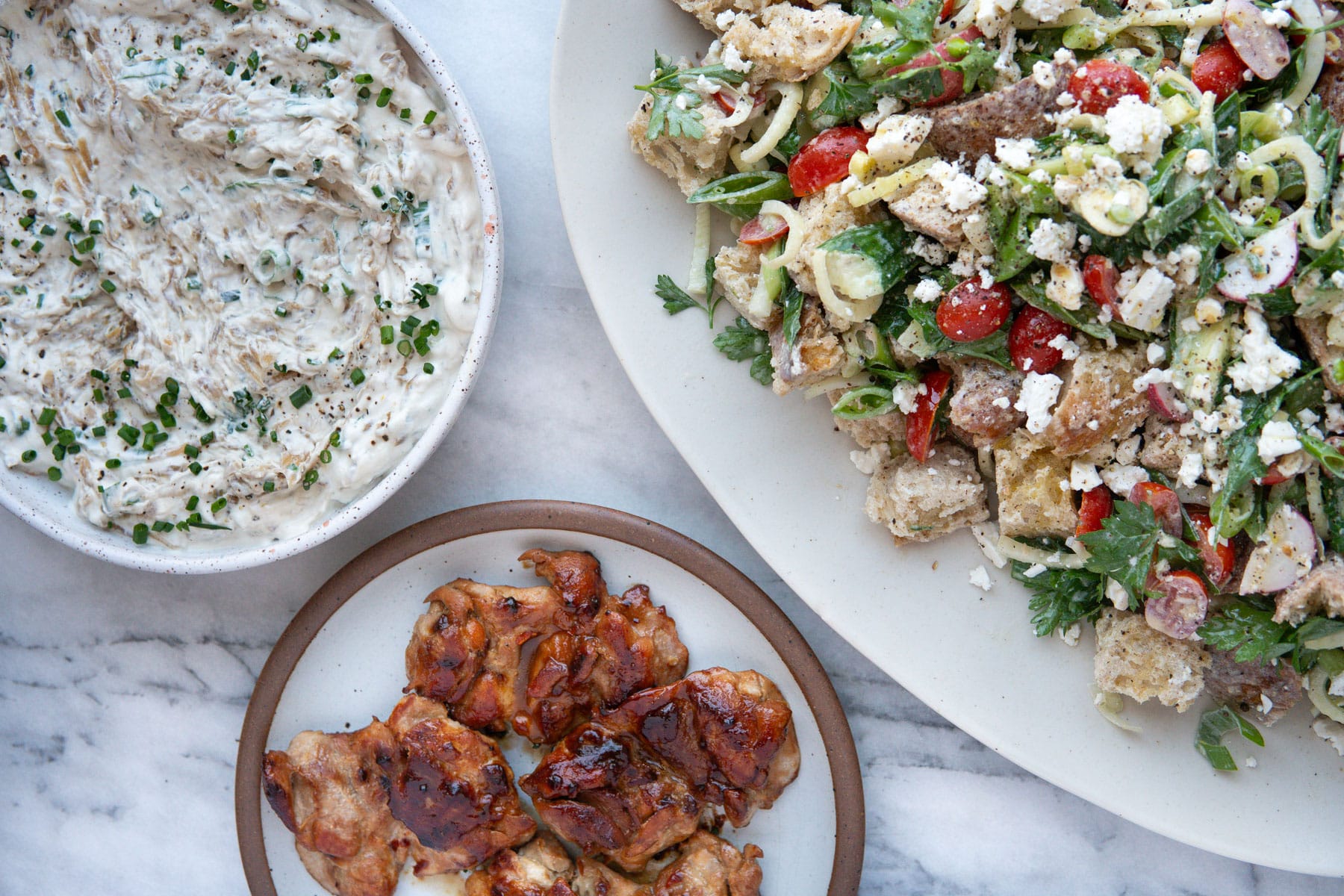How I put together a Cooking Club menu

I often get asked how I come up with my menus every week and in the annual survey, a couple of members were also curious. There’s a loose strategy I use and I figured this might help you out when you’re planning all of your dinners for the week. 1. Make sure there is a […]
I often get asked how I come up with my menus every week and in the annual survey, a couple of members were also curious.
There’s a loose strategy I use and I figured this might help you out when you’re planning all of your dinners for the week.
1. Make sure there is a variety of recipe types
Whenever I’m putting a menu together, I like to have a variety of recipe types – salads, soups, pastas, sheet pan/skillet recipes, etc…
For example, a salad, a pasta, and a hearty bowl. That way, dinners feel diverse rather than monotonous – so you’re making pasta for dinner on Monday, tacos on Tuesday, and a hearty salad on Wednesday.
2. A mix of meat and vegetarian recipes
In general, I try to have two dinner recipes that include two different types of meat or fish and one recipe that is naturally vegetarian. I always give instructions on how to substitute to make something vegetarian or to add animal protein.
I personally feel better eating animal protein with most of my meals, but I like to have a a plant-based recipe that can either stand on it’s own as a meal or be paired with your protein of choice.
3. A mix of speedy vs. more prep heavy recipes
My goal with your weekly recipes is to make them as speedy as possible so that cooking becomes less stressful and time consuming.
If there is a recipe I come up with that has a lot of steps or takes a long time to cook, I balance it out with recipes that are faster/easier to just throw together or require less chopping.
4. Make recipes adaptable and/or overlap ingredients
I don’t want you to have you go out and buy too many different non-staple ingredients for a menu.
So I always try to make recipes that have ingredients (mostly produce/dairy) that are easily adaptable or that overlap with another recipe. This saves you time at the store, with meal prep, and hopefully reduces food waste.
For example, if one recipe calls for mozzarella cheese and another that calls for cheddar – you can just pick one and use it for both recipes. Or if you need cilantro for one recipe and parsley for another, you can just use all parsley or all cilantro.
My recipes in general are very adaptable, which is why I always give you tips/options under the recipe or in the substitutions section.
And that’s it!
Those are the main steps my brain goes through when I’m putting a menu together. Often I’ll come up with the recipes, then I’ll realize “oh those don’t work well together” or “oh this menu has too many heavy things, let’s throw in a salad instead”. Then I’ll move one recipe and use it in another menu.
I hope that all makes sense and helps you improve your menu planning skills! Remember, when it comes to planning your dinners for the week, it’s super helpful to make a “Staple Meals” list (read this post for more info/tips on meal planning/prepping).


leave your comments!